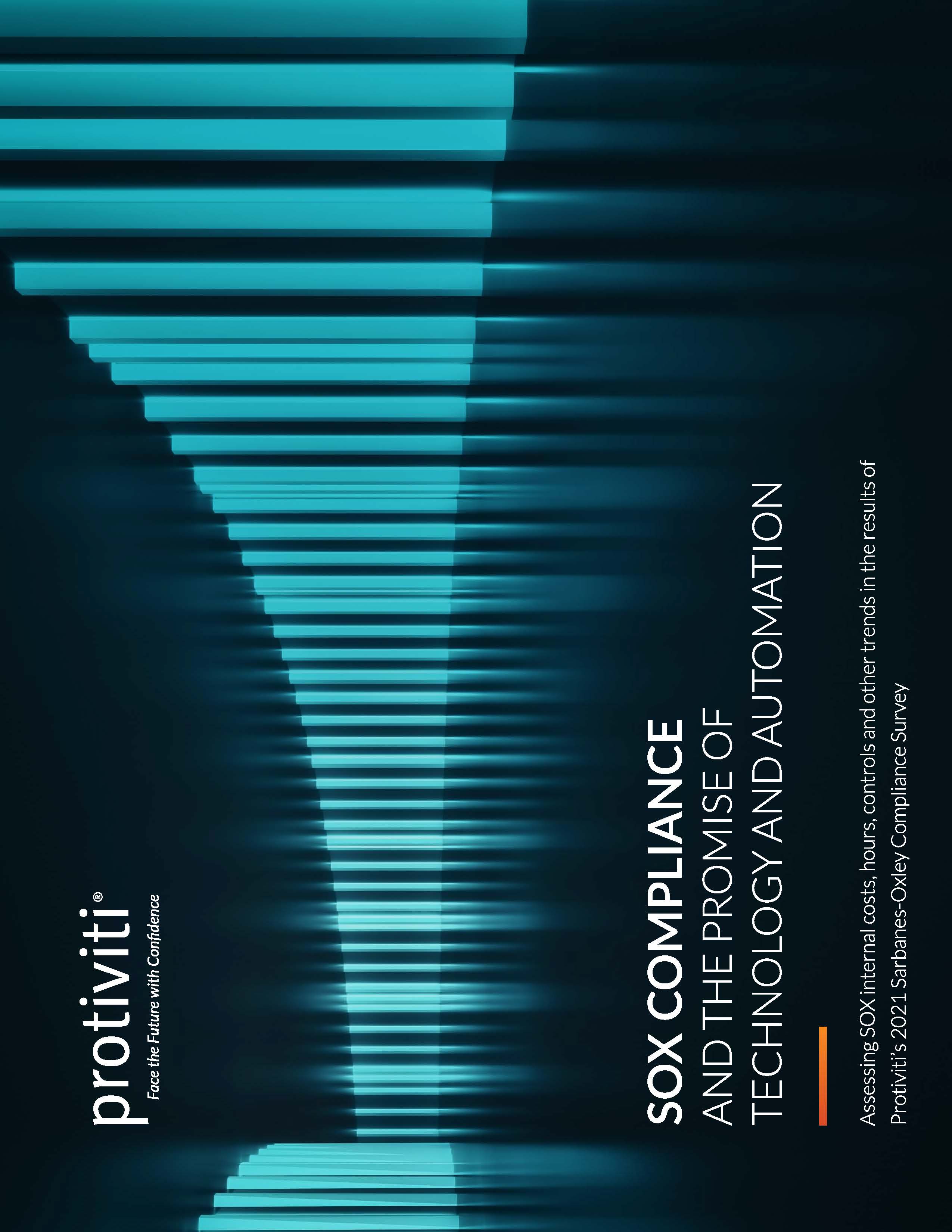2021 Sarbanes-Oxley Compliance Survey

SOX Compliance in Focus: Analyzing Trends From 2021 Survey Data
It’s been more than a year since a historic global pandemic changed the way companies operate in the near-term and very likely for the long-term future. We can see the impact on numerous fronts — certainly including the time, costs and efforts organizations are investing in their Sarbanes-Oxley compliance activities. And for certain companies, the use of technology and automation rose to the forefront as a key advantage.
The results of Protiviti’s annual Sarbanes-Oxley Compliance Survey quantify some of the effects. SOX compliance costs, which have revealed relatively consistent year-over-year increases for the past decade of our study, showed some leveling off for certain groups of organizations. This likely is an indication of changing operating models resulting from closed offices and facilities, which altered the way SOX audits were conducted and, in most cases, reduced typical travel related to compliance activities. As part of this year’s study, we also took a closer look at organizations we define as ‘‘Digital Leaders.’’ There are some interesting differences in how these organizations approach their SOX compliance activities relative to other organizations.
Key findings include:
- Internal SOX compliance costs continue to rise, but the results are more of a mixed bag. While SOX compliance costs have gone up for a number of groups of organizations, other companies have seen slight decreases.
- Hours continue their upward march. SOX compliance hours increased for a majority of organizations, and among these companies, most experienced increases of 10% or more.
- With technology and automation, digital leaders stand out. In numerous aspects of the SOX compliance process, from the use of technology tools to automating controls in different processes, digital leaders are significantly more advanced than other organizations.
- Automation presents challenges. Implementing automation in the SOX compliance process can present challenges for any organization.